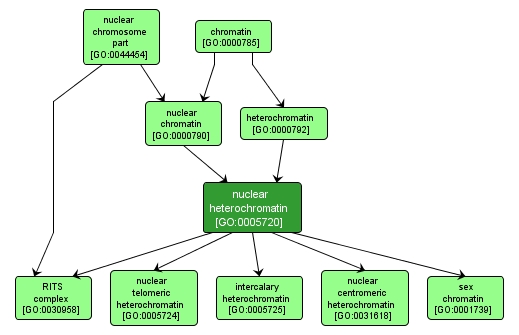GO TERM SUMMARY
|
| Name: |
nuclear heterochromatin |
| Acc: |
GO:0005720 |
| Aspect: |
Cellular Component |
| Desc: |
A condensed form of chromatin, occurring in the nucleus during interphase, that stains strongly with basophilic dyes. The DNA of heterochromatin is typically replicated at a later stage in the cell-division cycle than euchromatin. |
|

|
INTERACTIVE GO GRAPH
|














